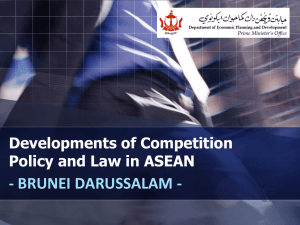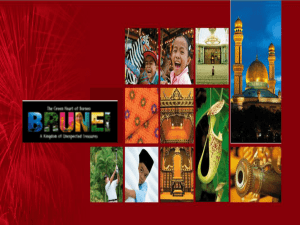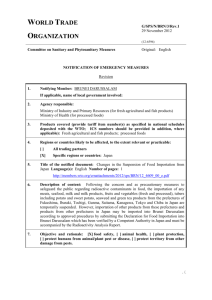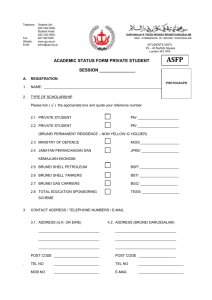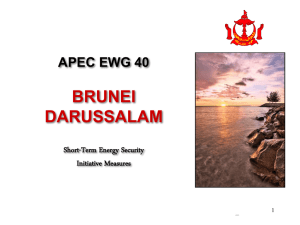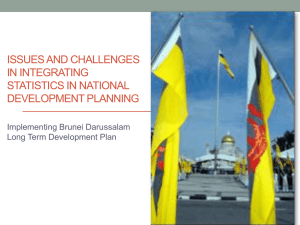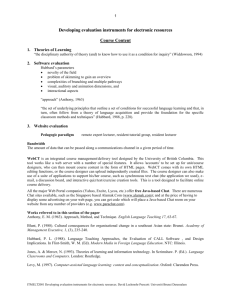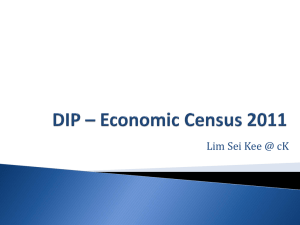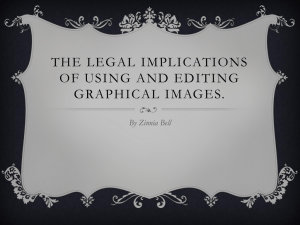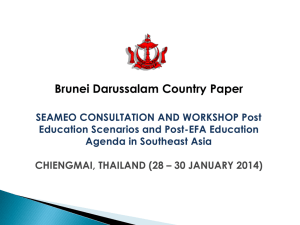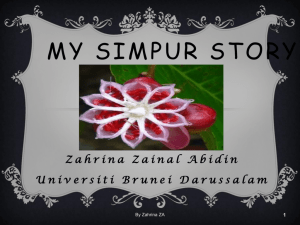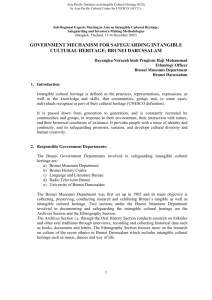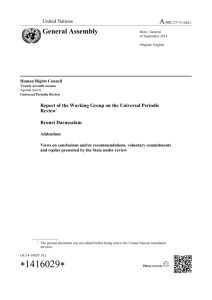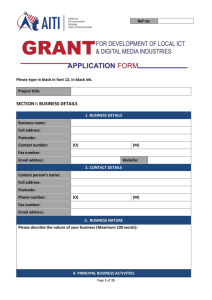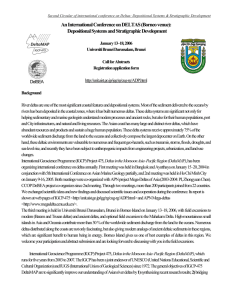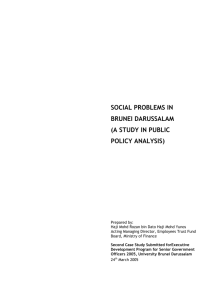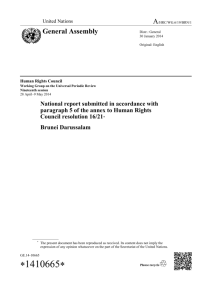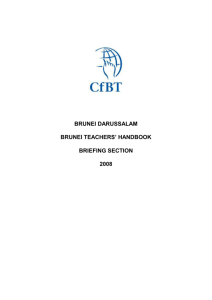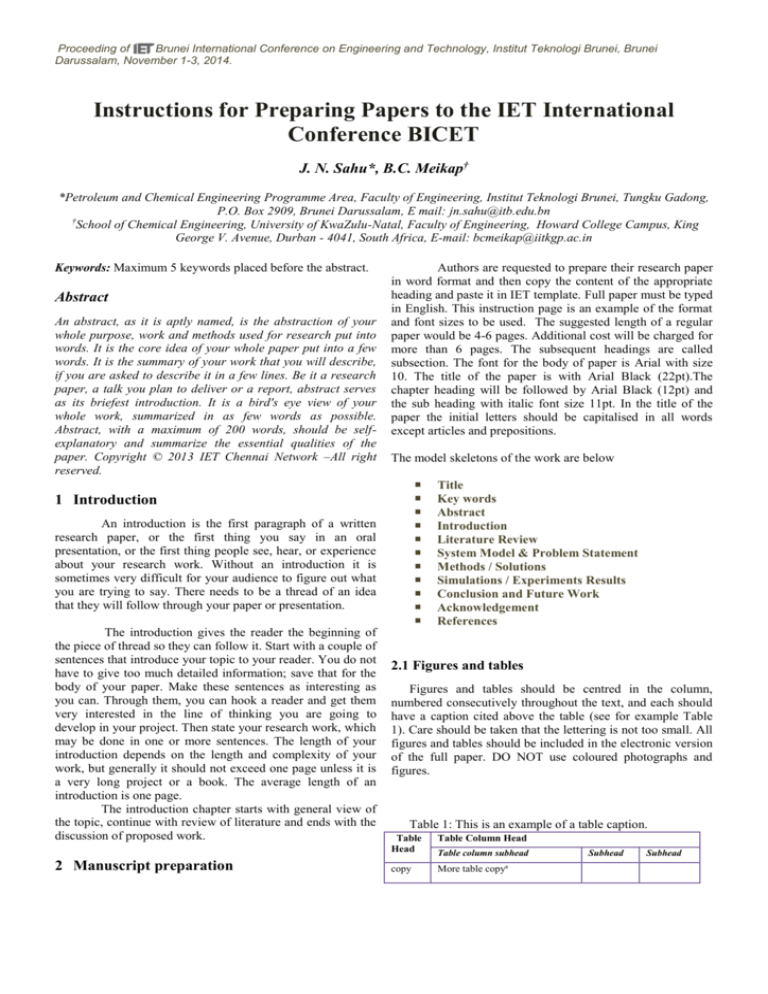
Proceeding of
Brunei International Conference on Engineering and Technology, Institut Teknologi Brunei, Brunei
Darussalam, November 1-3, 2014.
Instructions for Preparing Papers to the IET International
Conference BICET
J. N. Sahu*, B.C. Meikap†
*Petroleum and Chemical Engineering Programme Area, Faculty of Engineering, Institut Teknologi Brunei, Tungku Gadong,
P.O. Box 2909, Brunei Darussalam, E mail: jn.sahu@itb.edu.bn
†
School of Chemical Engineering, University of KwaZulu-Natal, Faculty of Engineering, Howard College Campus, King
George V. Avenue, Durban - 4041, South Africa, E-mail: bcmeikap@iitkgp.ac.in
Keywords: Maximum 5 keywords placed before the abstract.
Abstract
An abstract, as it is aptly named, is the abstraction of your
whole purpose, work and methods used for research put into
words. It is the core idea of your whole paper put into a few
words. It is the summary of your work that you will describe,
if you are asked to describe it in a few lines. Be it a research
paper, a talk you plan to deliver or a report, abstract serves
as its briefest introduction. It is a bird's eye view of your
whole work, summarized in as few words as possible.
Abstract, with a maximum of 200 words, should be selfexplanatory and summarize the essential qualities of the
paper. Copyright © 2013 IET Chennai Network –All right
reserved.
Authors are requested to prepare their research paper
in word format and then copy the content of the appropriate
heading and paste it in IET template. Full paper must be typed
in English. This instruction page is an example of the format
and font sizes to be used. The suggested length of a regular
paper would be 4-6 pages. Additional cost will be charged for
more than 6 pages. The subsequent headings are called
subsection. The font for the body of paper is Arial with size
10. The title of the paper is with Arial Black (22pt).The
chapter heading will be followed by Arial Black (12pt) and
the sub heading with italic font size 11pt. In the title of the
paper the initial letters should be capitalised in all words
except articles and prepositions.
The model skeletons of the work are below
1 Introduction
An introduction is the first paragraph of a written
research paper, or the first thing you say in an oral
presentation, or the first thing people see, hear, or experience
about your research work. Without an introduction it is
sometimes very difficult for your audience to figure out what
you are trying to say. There needs to be a thread of an idea
that they will follow through your paper or presentation.
The introduction gives the reader the beginning of
the piece of thread so they can follow it. Start with a couple of
sentences that introduce your topic to your reader. You do not
have to give too much detailed information; save that for the
body of your paper. Make these sentences as interesting as
you can. Through them, you can hook a reader and get them
very interested in the line of thinking you are going to
develop in your project. Then state your research work, which
may be done in one or more sentences. The length of your
introduction depends on the length and complexity of your
work, but generally it should not exceed one page unless it is
a very long project or a book. The average length of an
introduction is one page.
The introduction chapter starts with general view of
the topic, continue with review of literature and ends with the
discussion of proposed work.
2 Manuscript preparation
Title
Key words
Abstract
Introduction
Literature Review
System Model & Problem Statement
Methods / Solutions
Simulations / Experiments Results
Conclusion and Future Work
Acknowledgement
References
2.1 Figures and tables
Figures and tables should be centred in the column,
numbered consecutively throughout the text, and each should
have a caption cited above the table (see for example Table
1). Care should be taken that the lettering is not too small. All
figures and tables should be included in the electronic version
of the full paper. DO NOT use coloured photographs and
figures.
Table 1: This is an example of a table caption.
Table
Head
Table Column Head
copy
More table copya
Table column subhead
Subhead
Subhead
Proceeding of
Brunei International Conference on Engineering and Technology, Institut Teknologi Brunei, Brunei
Darussalam, November 1-3, 2014.
all co-authors and any consent required from sponsors before
submitting a paper.
3.1 Pre-screening by Authors
All papers are pre-screened by authors to ensure that only the
most significant are sent for review. Please ensure that your
manuscript
satisfies
the
following
points:
Originality: Is the work scientifically rigorous, accurate and
novel? Does the work contain significant additional material
to that already published? Has its value been demonstrated?
Figure 1: This is an example of a figure caption.
Relevance: Is the material appropriate to the scope of the
conference to which it is submitted?
2.2 Equations
Motivation: Does the problem considered have a sound
motivation? Does the paper clearly demonstrate the scientific
interest of the results?
Equations should be typed within the text, centred, and
should be numbered consecutively throughout the text. They
should be referred to in the text as Equation (n). Their
numbers should be typed in parentheses, flush right, as in the
following example. You must use Microsoft Equation Editor
or Mathtype. Be sure that the symbols used in your equation
have been defined before the equation appears or immediately
following.
n
Min wi * xi
(1)
i
2.3 References
Number citations should appear consecutively in
square brackets [1]. Punctuation follows the bracket [2]. Refer
simply to the reference number, as in [3]. Use “Ref. [3]” or
Reference [3]” at the beginning of a sentence: “Reference [3]
was the first …” Give all authors’ names; use “et al.” if there
are six authors or more. Papers that have not been published,
even if they have been submitted for publication, should be
cited as “unpublished” [4].Papers that has been accepted for
publication should be cited as “in press” [5]. In a paper title,
capitalize all words except for conjunctions, prepositions less
than seven letters, and prepositional phrases.
2.4 Abbreviations and Acronyms
Define abbreviations and acronyms the first time
they are used in the text, even if they have been defined in the
abstract. Abbreviations such as IET, IEEE, SI, MKS, CGS,
ac, dc, and rms do not have to be defined. Do not use
abbreviations in the title unless they are unavoidable.
Referencing: Has reference been made to the most recent and
most appropriate work? Is the present work set in the context
of the previous work?
Clarity: Is the English clear and well written? Poorly written
English may obscure the scientific merit of your paper. Are
the ideas expressed clearly and concisely? Are the concepts
understandable?
Length: Unless previously agreed with the conference
Managing Editor, all submissions must conform to the IET
Proceedings Length Policy document. Visit website for length
policy.
3.2 Review Process
For conference-related papers, the decision to accept or
reject a paper is made by the conference editors and
publications committee; the recommendations of the referees
are advisory only. The review process for BICET involves six
stages with two national and one international reviewer for a
paper which is mentioned below.
Zero stage filtering
Plagiarism check
Review of Technical Content ( 2 reviewer /paper – 1
National and 1 International)
Scrutiny through publication committee
Verification of BICET Formatting
Final Decision of paper
How to avoid Plagiarism
3 Author’s Guide
Submission of a manuscript is required only through
online submission. Do not submit a reworked version of a
paper you have submitted or published elsewhere. The
submitting author is responsible for obtaining agreement of
A piece of writing that has been copied from someone else
and presented as your own work is termed as Plagiarism.
Ways to avoid plagiarism:
Proceeding of
Brunei International Conference on Engineering and Technology, Institut Teknologi Brunei, Brunei
Darussalam, November 1-3, 2014.
Here are some tips on how to avoid plagiarism Paraphrase – Never use someone else's words – substituting
synonyms is also a no-no. Don't use their sentence structure
either. Write everything in your own words as you understand
it. The best way to do this is to go through the required
reading material and then put it all away when you start
writing. Refer to it only after you are done to check if you
have got all the facts right.
Quotation Marks – If you need to use what someone else
has written or said in your writing, write their exact words
and put them in quotation marks. If you are omitting certain
sections, put '......' in between words to indicate this. If you are
incorporating a word or words so that the sentence makes
reading sense, put those words in square brackets '[like this]'.
Cite Sources – You can either write 'According to Professor
So-and-so....' or 'Professor So-and-so states that....' or you can
provide links to websites you have referred to or you can list
the sources after your article or do all of the above.
Manage your time – If you have to meet a deadline, start
work early, you have plenty of time to research and write.
Lack of time is one reason many people – especially stressedout students – intentionally or unintentionally plagiarize.
Check for Plagiarism:
There are several online tools to check for plagiarism.
Recently the very witty website of romance literature, Smart
Bitches Trashy Books, rooted out a romance writer by simply
entering suspect passages from her books in the Google
search engine; it was found that she had plagiarized material
from several non-fiction, non-romantic sources. This
particular writer says she had no idea she was doing
something wrong, which may or may not have been the case,
but it is not an excuse that the law allows. You must make it
your business to find out what the rules are.
But you shouldn't avoid plagiarism just because the rules tell
you to or because there is a risk of getting found out and the
inevitable disgrace and penalties. You should avoid it because
that is the right thing to do and you owe it to yourself to give
your intellect a chance. Maybe your writing will not be firstrate – that takes time and repeated effort - but, understand
this, it will never become first rate if you keep swiping other
people's works.
3.2.1 Electronic submission of the paper
The corresponding authors are requested to submit
the contribution of your research work as per IET
BICET2104 template in before the last date of submission.
The number of pages should be limited to 6.
4 Conclusion
The conclusion of the research paper is the most
valuable single part of it. All the material you have gathered
means nothing to your reader until you present the conclusion
you have reached as a result of your research. Restate your
work and show what the material you have presented adds up
to. Analyze and evaluate your main points for your reader;
also consider the consequences and general implications of
them to your conclusion. Although no actual new information
is usually introduced in the concluding paragraphs, the
conclusion is the only "original" contribution you offer in
your paper. It manifests the value of your research as well as
your understanding of the material that you have presented. It
should be a strong recapitulation of your major ideas.
Conclude finally with future extension of the work.
References
[1] A. B. Author, C. D. Author. “Title of the article”, The
Journal, volume, pp. 110-120, (2000).
[2] A. B. Author, C. D. Author. “Title of the article”, The
Journal, volume, pp. 110-120, (2000).
The list of references should be ordered alphabetically
according to the reference number order. All references
should be cited in the text, and using square brackets such as
[1] and [2, 3].

